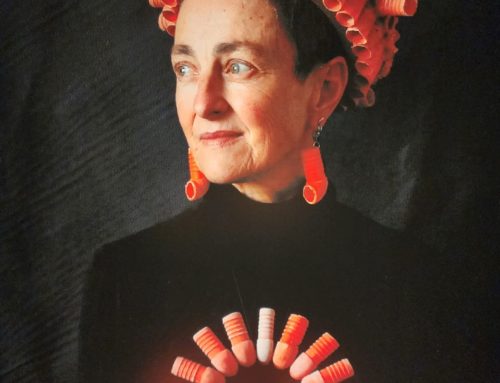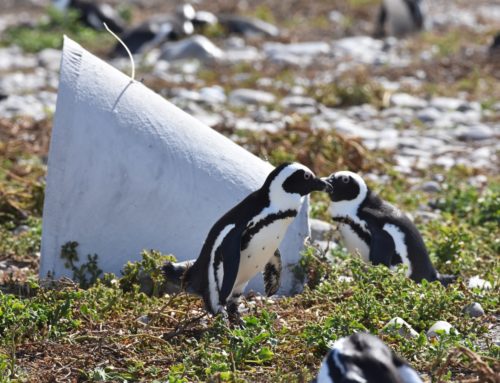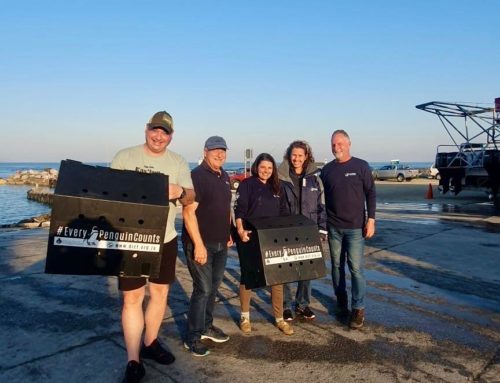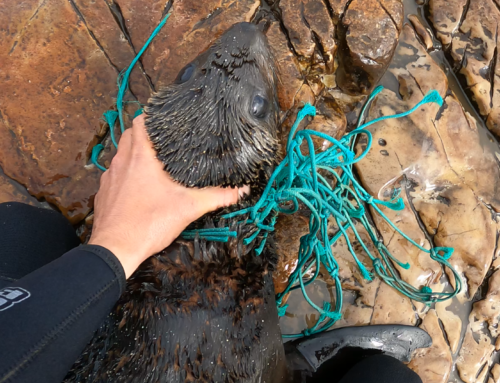Whale Blog Launched
December 07, 2011 by dyertrust
The first important steps have been taken and the monitoring of the cetaceans in the Greater Dyer Island area has begun. This blog will keep you informed about the progress of the PhD project.

The main objective of the study is to:
To obtain baseline information on fine-scale movement, individual behaviour and habitat use of cetaceans between Danger Point and Pearly Beach, Western Cape, South Africa.
The project is carried out in close cooperation with the Dyer Island Conservation Trust.
Supervisor: Professor Marthan Bester1
Co-supervisor: Ms Meredith Thornton1 & Dr. Simon Elwen1
Co-operation: Dr. Steve Kirkmann2
1Univeristy of Pretoria, Mammal Research Institute, Department of Zoology & Entomology.
2Oceans & Coast, Department of Environmental Affairs.
The result of this study will allow us to address conservation issues relating to the development of the area including identifying key areas and times that are of maximum conservation priority. Knowledge provided by this study can be utilized in future decisions concerning the protection of the marine environment and will contribute directly to the protection of the cetacean species located in this area.
Theodolite tracking
In August 2011 theodolite tracking of the whales and dolphins commenced. Some of the obstacles were to get access to high observation points. After knocking on several doors in Pearly beach asking for access to the owners balconies and rooftops, two main stations are now in full function:
The water tower at Pearly BeachWith permission from the Overstrand Municipality we have been given permission to use the roof of the local water tower (see picture 1 and 2). It is ideal for the theodolite tracking because it is 38.5m above sea level and close to the seashore. A special build stand for the theodolite has been built on the top of the tower, which ensures that the theodolite is set-up in the same position each time.
Picture 1 and 2. Tracking from the top of the water tower.
To access the roof of the water tower, one must climb two high open ladders (approx. 15m high) inside the tower (see picture 3). It can be fatal if one slips, so safety measures have been taken to secure the climb. A professional rock climber from Cape Town spent a weekend installing a safe climbing system and trained Katja how to use the climbing gear. The funding from Wilderness Wildlife Foundation ensures that the tracking team is now able to operate safely.
Picture 3. The first of the two high and dangerous ladders in the water tower.
A private balcony at the bay in Pearly Beach
In general, South Africans are interested in nature conservation projects and the local community are highly supportive. It has not been difficult to get access to private balconies; the biggest challenge has been to choose the right one! The view of the bay from most of the balconies in Pearly Beach was obstructed by other houses or the balconies were not high enough for ideal tracking conditions. For now a balcony of a summerhouse located right at the edge of the Pearly beach bay is being used (called tracking station Balcony 1). It would be better if it were placed higher, which is why two other stations are being prepared.
The two new stations are a bit more demanding, since we will have to build two observation towers at the seashore on the high sand dunes. An application has been submitted at Cape Nature, since the sites fall within their nature reserves.
Method
During a tracking session at least two people are ready to track the whales an hour after sunrise. The team continues tracking until half an hour before sunset or if the weather increases to above sea state 5 Beaufort.
A Weather report and a Scan are carried out every full hour.
Picture 4. The team scanning the area with binoculars, searching for whales, dolphins and boats.
Once the team has an overview of what is in the area, a decision is made of which animals to track with the theodolite. The following criteria determine at which priority the animals will be tracked:
1.Dolphins of any species
2.Southern right whale cow with calf
3.Southern right whale Surface Active Group (SAG)
4.Solitude southern right whale
5.Humpback whales and Brydes whales
It is often possible to track more than one group of whales at the same time -This depends on the behaviour and the activity level of the animals.
The SAG often remain in the same area and are easy to track, therefore it is possible to track a southern right cow with its calf or a group of dolphins at the same time.
Picture 5 and 6. The theodolite which is used to track the whales and dolphins from shore.
The data from the tracking of the whales and dolphins provides the researcher with knowledge of how long the animals spend in the area, if the animals have a preference to some areas and if certain types of behaviours are associated with specific areas or seasons.
Volunteers
An important part of the project is the training of and help from volunteers. The volunteers who help on the project, are trained in data collection, data entry and analysis. During off-sea days, when weather is too rough to use the theodolite, the volunteers have been involved in administrative work, this consists mainly of cropping and matching archive pictures of indo-pacific bottlenose dolphins, entering data from the theodolite tracking and checking archive data from the whale boat.
Three dedicated volunteers have joined the project since June. Kathrine Leone, Camilla Camel Rhodes and Caroline Johansen they have all been of great help and without them, the theodolite tracking would not have been possible. New volunteers are arriving and applying all the time. Volunteers do not pay to attend the project, but they cover their own plane ticket and living costs. Housing in Kleinbaai is arranged for a small rent. Volunteers are always welcome.
If interested, volunteers can contact the PhD-student.
Colleagues from the company Arctic whale watching have also been visiting for most of October assisting with the data collection as well as data processing.
Picture 7. Katja and the two volunteers; Camilla and Kathy working with the historic data form the whale watching boat as well as the freshly gathered theodolite tracking data.
ID-pictures and archive data
A primary objective for this year is to determine the quality of the archive data from our whale watching boat Whale Whisperer (Dyer Island Cruises). Every time the whale boat leaves Kleinbaai harbour on a whale watching trip specific data is collected when whales/dolphins are encountered, such as: GPS positions, species, amount of animals, group compositions and behaviour in the area. This data has been found to be reliable and provides a strong indication of the distribution, seasonality and home range of the six cetacean species which are using the area frequently. The preliminary results show that the main whale and dolphin species in the area are:
Southern right whale (Eubalaena australis)
Humpback whale (Megaptera novaeangliae)
Brydes whale (Balaenoptera edeni)
Indo-pacific humpback dolphin (Sousa chinensis)
Common dolphin (Delphinus delphis)
Indo-pacific bottlenose dolphins (Tursiops aduncus)
Valeria Gonzalez from Argentina, who has been working as a volunteer for 4 months, has been assisting on the whale safari boat for the season, and has been of great help cropping and preparing all the pictures of southern right whales from 2010 and 2011. These pictures will be analysed with the matching programme BigFish which was developed for southern right whales in Australia. The program is currently being used by one other researcher in South Africa.by using the identical programme it will enable future comparison of the two catalogues.
Picture 8 and 9. Pictures of southern right whales taken from the whale watching boat Whale Whisperer (Dyer Island Cruises). The whales can be identified by the calosities,which is the barnacle growth in the face region. The whales have different calosities patterns, eg. the two individuals in the pictures.One of them has a calosity on the lip and the other whale does not.
Pictures of cropped dolphin fins (Picture 10 and 11). The individuals can be recognized by markings on the dorsal fin. Pictures taken from the whale watching boat Whale Whisperer (Dyer Island Cruises) are cropped and matched. A match has made from these two pictures.
The dolphins are identified by markings on their dorsal fin. Picture 10 was taken on the 15th of September 2004 and picture 11 on the 5th of January 2005.














